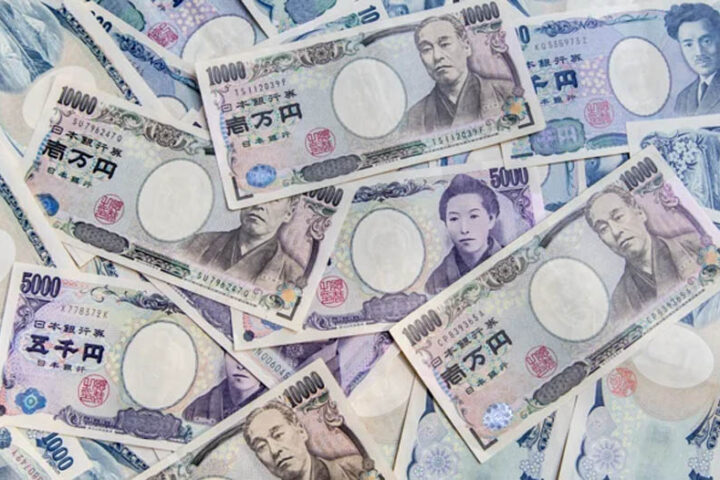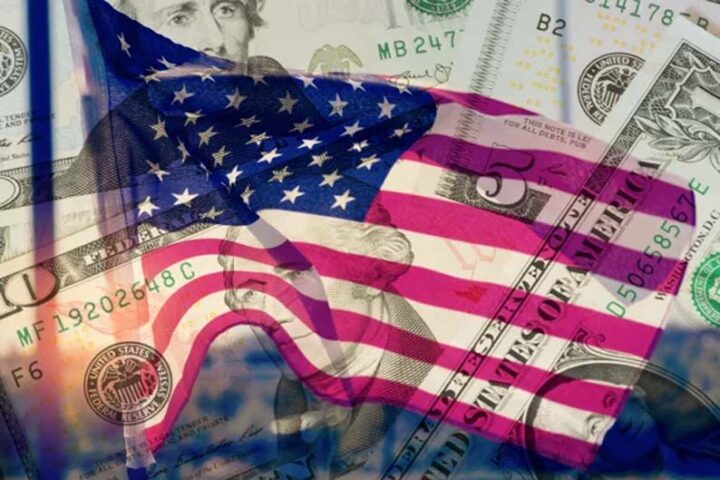By Jeffrey Halley
Wall Street had another schizophrenic day on Friday as May US Non-Farm Payrolls outperformed, rising by 390,000 jobs, slightly less than April, but well above market forecasts of 325,000.
That sparked yet another tail-chasing reversal across asset classes as US markets desperately search for “peak-hiking” from the Fed and return to their buy-everything happy space, an illness caused by endless rounds of quantitative easing and ultra-low rates by the world’s central banks over the past 15 years.
Equity markets tumbled, the US Dollar rallied, bond yields edged higher, and precious metals fell on Friday. Meanwhile, energy markets continued reacting to a disappointing OPEC+ meeting on the production front, Brent crude and WTI both closing just above $120 a barrel.
We can expect more of the same from US markets this week, tiring and asinine as it may be.
US markets will have a second bite of the cherry this Friday when Inflation and Core Inflation for May are released. YoY Inflation is currently expected to be unchanged at 8.30%, with Core Inflation expected to ease slightly to 5.90%.
We can once again expect a binary outcome as we head into next week’s FOMC policy decision. An “on forecast” to lower number equals buys everything, sell US Dollars; higher equals sell everything, buy US Dollars.
It’s pretty hard to guess what the FOMO gnomes of Wall Street will do until Friday, but I’m pretty sure volatility will, once again, be the winner.
Orderly start in Asia
Asia is having an altogether more orderly start to the week.
China announced a further easing of curbs in Beijing over the weekend, which is seeing some Asian equity markets, and US futures, trading in positive territory.
Other glimmers of relief are that officials in Washington D.C. are considering a selective removal of tariffs on Chinese imports to aid the inflation fight.
In the energy space, Reuters reported that Washington DC is allowing Spain’s Repsol and Italy’s ENI, to resume debt-for-oil shipments with Venezuela, with Libya announcing its largest oil field had finally restarted operations.
Oil shrugged those headlines off in Asia, holding steady on weekend news that Saudi Arabia had hiked oil export prices to Asia and Europe, and with China reopening hopes suggesting higher oil demand.
Investors will take heart that some sort of rebound has taken place even as restrictions remained in place in Shanghai and Beijing, and that as they ease in both cities, the rebound will accelerate. That seems to be another tailwind for China equities.
Holidays will impact markets on Monday with South Korea, New Zealand and Malaysia away. Much of Europe is also closed including Germany, France, the Netherlands, and the Nordic region.
UK markets return from a four-day Jubilee break, as Prime Minister Boris Johnson could face a vote of no confidence and a leadership challenge this week. I’m not sure if BoJo’s demise would be bullish or bearish the Sterling or UK equities, I guess it depends on your point of view.
The data calendar is also quiet in America with the most heavyweight data releases back-ended later in the week including US CPI and the Bank of Canada policy decision.
On Tuesday, we have a Reserve Bank of Australia policy decision, with the Reserve Bank of India on Wednesday. With all three, a rate hike is a certainty, the main question being by how much and whether slowdown fears cause them to blink on aggressiveness.
The next 24 hours in markets, therefore, are likely to be driven by headlines and intraday swings in sentiment. A case in point being the Bank of Japan’s Governor Haruhiko Kuroda reiterating Monday that there would be no tightening of monetary policy, which has lifted Japanese equities at the periphery while maintaining upward pressure on USD/JPY.
Oil steady as Saudi hikes prices
Oil prices ignored Fed tightening nerves after the US data, rallying strongly with the relaxing of China Covid curbs, with its ensuing return of oil demand, the story driving oil markets.
Brent crude rose 2.70% to 121.25 a barrel, with WTI rising 2.35% to 120.35. There seems to be some confusion with pricing feeds on oil futures Monday, possibly as platforms shift their front-month futures from June to September. Brent crude eased slightly in Asia to $120.45 a barrel, while WTI eased to $119.65.
While China relaxing Covid curbs and Saudi Arabia hiking selling prices to Asia and Europe are supporting prices, potential Venezuelan shipments to Europe are providing temporary resistance.
Both Brent and WTI prices are nearing post-Ukraine highs, stripping at the days of the initial hostilities themselves. Returning Venezuelan and Libyan production to Europe and North America, should it occur, will not be material enough in the shorter term to force prices lower.
Refining margins globally suggest that demand for petrol and diesel remain in heavy demand, with the refining logjam in refined products backstopping crude prices.
Additionally, the damp squib OPEC+ meeting outcome, with some production bones thrown to some angry dogs, and a potential recovery in demand from Mainland China as it has got on top of omicron, provides yet more reasons to believe that physical demand will keep prices elevated.
Brent crude has resistance at $122.00, and $124.00, with support distant at $116.00 and $112.50. WTI has resistance at $121.00, with now distant support at $115.00 and $111.25.
Gold’s flip-flop continues
Strong US data saw the fast-money longs in gold take fright and head to the exit door on Friday. That pushed gold sharply lower by 0.95% to $1851.00 an ounce as the US Dollar rallied. In Asia, a moribund session has seen gold add 0.25% to $1855.70 an ounce.
The chart picture shows gold is now eroding resistance at $1870.00, touching $1874.00 on Friday.
Overall, though, resistance at $1870.00 remains intact, followed by the 100-DMA at $1889.00, and then $1900.00. So, gold has plenty of wood to chop on the upside.
Support is at $1844.00, $1830.00, and then $1780.00. I do not discount a disorderly retreat if the latter fails.
Gold remains at the mercy of intraday direction moves by the US Dollar, it seems.
Jeffrey Halley is Senior Market Analyst, Asia Pacific at OANDA
Opinions are the author’s, not necessarily that of OANDA Global Corporation or any of its affiliates, subsidiaries, officers or directors. Leveraged trading is high risk and not suitable for all. Losses can exceed investments.







